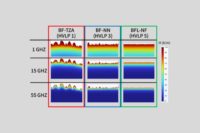Items Tagged with 'DesignCon2023'
ARTICLES
Finite Element Modeling of Copper Foil Loss From AFM Measurements
DesignCon 2023 Best Paper Award Winner
Read More
Rigorous Correlation Methodology for PCIe Gen5 & Gen6 DSP Based IBIS-AMI Models
DesignCon 2023 Best Paper Award Winner
Read More
Data-Efficient Supervised Machine Learning Technique for Practical PCB Noise Decoupling
DesignCon 2023 Best Paper Award Winner
Read More
Statistical BER Analysis of Concatenated FEC in Multi-Part Links
DesignCon 2023 Best Paper Award Winner
Read More






